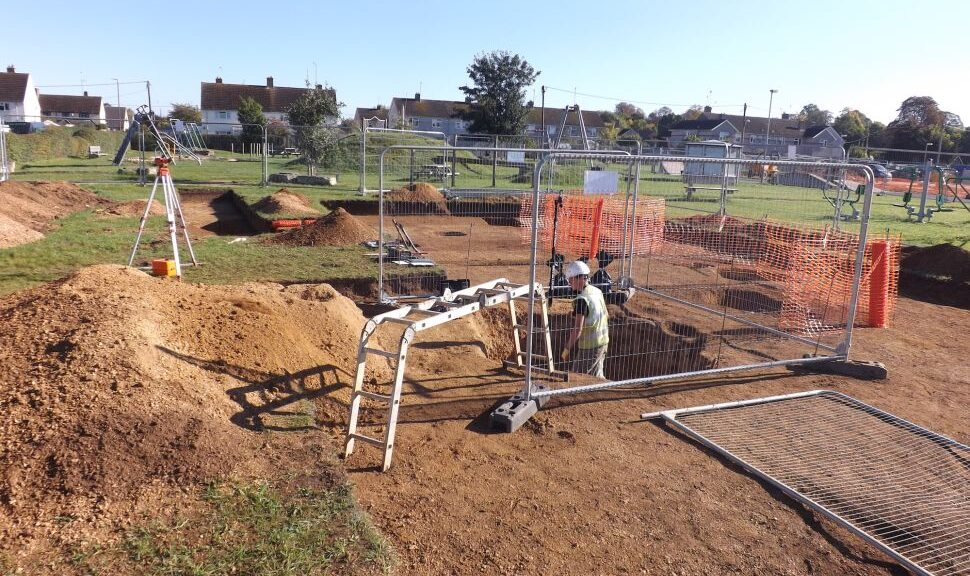4,200-year-old burial of Bronze Age chieftain discovered under UK skate park
GLOUCESTERSHIRE, ENGLAND—BBC reports that two Bronze Age burials situated within a circular ditch were unearthed in southwestern England by a team including Andy Hood of Foundations Archaeology.
The first burial, placed in the center of the circle, contained the remains of a possible chieftain, who had been placed in the grave on his side in a crouched position.
The skulls and hooves of four cattle, a copper dagger with a whale-bone pommel, a stone wrist guard, an amber bead, and a flint and iron pyrite for starting fires were also found in the grave.

The second grave, found near the first, held the remains of an older man placed in a seated position, and the skull and hooves of one animal.
Radiocarbon dating of the burials indicates the men lived around 4,200 years ago, and the artifacts in both burials indicate the men might have been members of the Beaker culture.
“It’s quite a significant investment of wealth to go into the ground,” Hood added. “There’s a chance that these animals were slaughtered as part of a ceremony related to the burial.”
The age and style of the burials, as well as artifacts found near the chieftain, suggest that these men were part of the Beaker culture, named for its beaker-like ceramic pots.
According to recent DNA studies, the people in this culture arrived from mainland Europe around 2400 B.C. They were an impressive lot who might have been the first to use copper and bronze in Britain, “so we think that their arrival is a fairly important moment in prehistory,” Hood said.


The Beaker culture commonly buried its dead with a “standard package” of grave goods: a beaker pot, a copper dagger, a stone wrist guard used by archers, a “strike-a-light kit,” amber beads and sometimes a cattle head and hoof offering, Hood said.
The chieftain had all these goods, except for the beaker pot, the archaeologists found. Because of the missing piece, “we think that this individual was a revered ‘specialist’ within Beaker society — somebody who wasn’t associated with the direct symbolism attached to the Beaker pot itself,” Hood said.
Even so, his grave goods were impressive and included: a copper dagger with a whale-bone pommel (the round knob at the end of the handle), a stone wrist guard, an amber bead, a flint and iron pyrite for starting a fire, and the cattle offerings.
The chieftain was buried at the center of a circular ditch that, at the time of burial, was a barrow, meaning that it had soil piled on top of it. Next to him, just off-center but still within the circular enclosure, were the remains of the older man, who was about 50 to 60 years old when he died.
Other news outlets have speculated that this older man was a shaman who may have been sacrificed to help the chieftain in the afterlife, but there is no evidence to support those claims, Hood said.
“The idea of him being a ‘shaman’ was postulated by some British newspapers,” Hood said, adding that “there is no evidence that he was sacrificed.”
Still, the older man’s burial is odd. “He was buried in an unusual ‘seated’ position — his legs were presently extending downwards towards the base of his grave pit,” Hood said. “We haven’t found a direct parallel elsewhere in Bronze Age Britain.”
Most people buried in Bronze Age Britain were arranged in a crouched position on their sides, as the chieftain was. So the older man’s proximity to the chieftain, as well as the man’s lack of a Beaker “package” and strange burial position, may remain a mystery for the ages.
